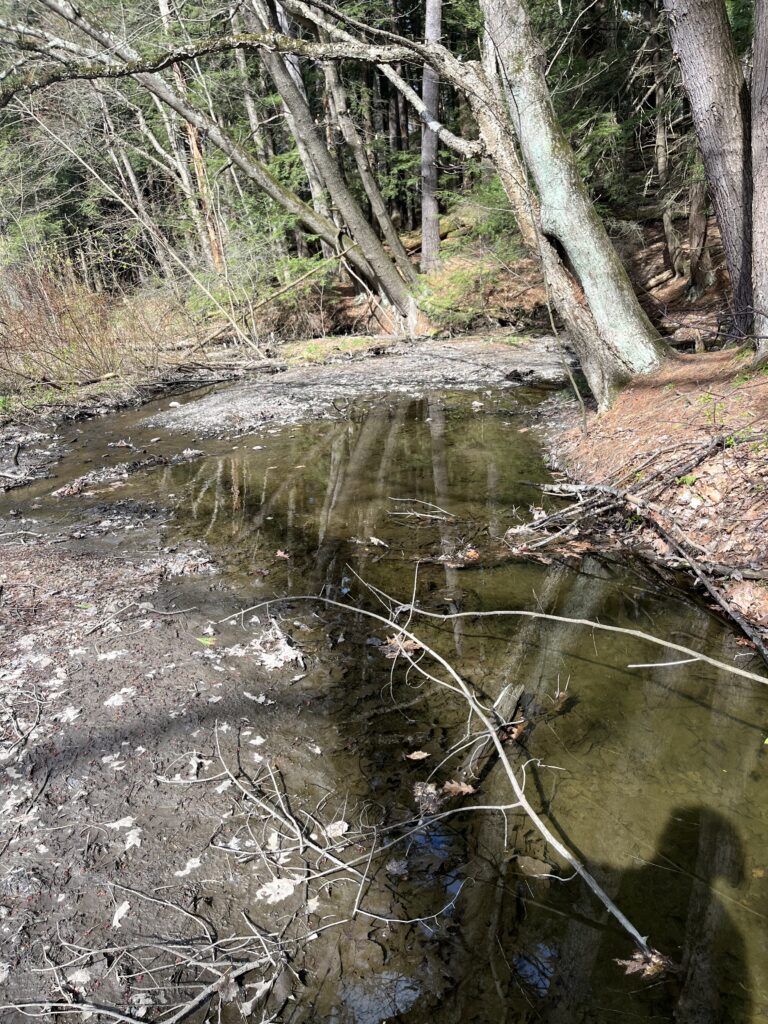As I walked around my phenology spot for the final time this year I thought about the concept of phenology and how it has changed this spot. The slow dampening of colors as fall progressed shifted to the gray and white of winter. Now, spring has truly sprung and the color of the area has almost fully returned.

As I walked to my location I was greeted by a massive Pileated Woodpecker (Dryocopus Pileatus). I stopped to admire this specimen and felt like a fitting and climactic ending to this project. The water has returned to the area and so have the creek chubs. Much more water is moving through the brook and the island that was present in the fall has returned. Ferns and small shrubs are fully green while the larger deciduous trees in the area have not completely transitioned from buds to leaves.
Nature and culture are closely tied to my phenology location. Being a park, Centennial Woods is a place where people escape the hustle and bustle of everyday life. You can feel it the moment that you leave the earshot of the road. It provides a slice of nature in an urban area, and in my eyes a sanctuary for human activity—gaining cultural ecosystem services such as deeper feelings of connection to nature; it also provides a less-fragmented and more complete ecosystem for wildlife and birds. The place is also an area that is tied to the culture of stolen land and the proliferation of colonial ideologies. It is still an area that adheres to a Western view of nature being separate from humans, and furthermore is owned by a land grant school—cementing it as a place with a history of oppression against indigenous people.

I would not call myself a part of my phenology location. I am a bystander, an observer, who is only taking part in the documentation of species in my place. I am not contributing to the competition that this ecosystem is undergoing. As phenological changes occur, I am not forced to adapt like the species of this location. So no, I am not a part of this location like a plant or bird species is, but as a young naturalist I have been able to observe and glean understanding from the processes and organisms that are a part of this ecosystem.
